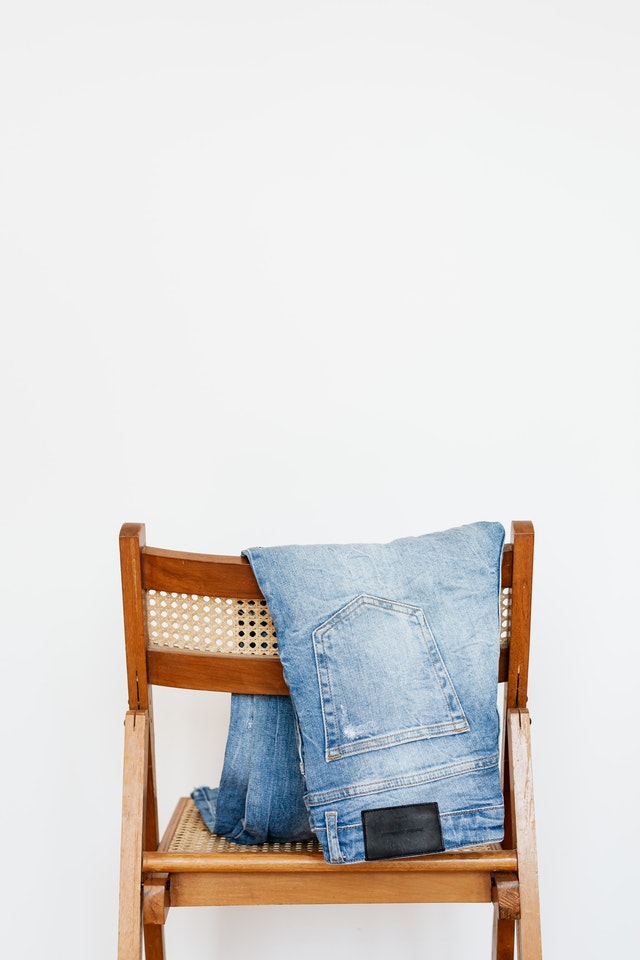Do your jeans regularly suffer from static cling? It’s a common problem that affects nearly all types of clothes — and jeans are no exception. Static cling involves the buildup of static electricity. When static electricity builds up on the surface of a garment, it will create a charge that “pulls” other objects to it. Static cling can result in dust, debris and lint sticking to the surface of your jeans. Fortunately, you can prevent static cling by following a few tips.
#1) Choose Heavyweight Jeans
Heavyweight jeans are less likely to suffer from static cling than their lightweight counterparts. They are typically thicker and denser. With these properties, heavyweight jeans are better protected against static cling. If you’re shopping for a new pair of jeans but want to avoid the headache of static cling, check the weight of the denim. Heavyweight jeans are defined by their use of heavy denim. They are typically constructed of at least 14 ounces of high-quality denim.
#2) Dry for a Shorter Period
You can protect your jeans from static cling by drying them for a shorter period. Most people dry their jeans in a tumble clothes dryer. Tumble clothes dryers, of course, use heat to remove moisture from wet and recently washed clothes. In doing so, they leave clothes dry, which is a risk factor for static cling.
Dry clothes, including dry jeans, can become statically charged more easily than moist or wet clothes. A simple solution is to dry your jeans for a shorter period. Rather than drying them for a full cycle, try drying your jeans for just 10 to 15 minutes. You can still wait for them to dry. The key thing to remember is that you shouldn’t overdry your jeans, as this may lead to static cling.
#3) Dry Separately
Another tip to protect your jeans from static cling is to dry them separately from your other clothes. For it to occur, static cling typically needs two things: dry air and friction. Friction is created naturally when your jeans rub against other garments. If you dry your jeans with a load of shirts or other garments, they’ll all rub together while potentially causing static cling. You can prevent this from happening by drying your jeans separately.
The downside to drying your jeans separately is that it consumes more energy. Dryers require electricity. And the more loads you dry, the more electricity your dryer will consume. Therefore, you may want to consider an alternative solution to deal with static cling. Only dry your jeans separately as a last resort. Otherwise, you’ll waste energy.
#4) Wash With Fabric Softener
Using just a little bit of fabric softener when washing your jeans can have a big impact on whether they suffer from static cling. Fabric softener will protect your jeans from static cling. It will add a layer of a softening agent to your jeans, which discourages the buildup of static electricity.
As the name suggests, fabric softener is a product that’s designed to soften garments. It’s available in liquid form, and it contains chemicals that loosen fabrics so that they feel softer. As a side effect, though, it offers protection against static cling. You can pour fabric softener into the washing machine, and when exposed to your jeans, it will protect them from static cling while leaving them feeling soft and smooth in the process.

#5) Spritz With Water
A fast solution for dealing with static cling is to use water. As previously mentioned, this phenomenon requires dry air. Garments will typically only suffer from static cling if they are dry. You don’t have to necessarily soak your jeans in water to protect them from static cling; all you have to do is spritz them with water.
If your jeans constantly suffer from a static cling, keep a spray bottle filled with water on hand. You can then spritz water over your jeans. Spritizig your jeans will water will coat them in a thin layer of moisture. This moisture will then discourage static electricity from building up on the surface of your jeans. The end result is greater protection from static cling.
#6) Try Line-Drying
You can try line-drying your jeans to protect them from static cling. Line-drying involves hanging garments on a line to dry. It’s not the same as machine-drying. Machine-drying uses heat and a tumbling motion to remove moisture from garments. Line-drying, on the other hand, only uses air to remove moisture from garments.
Both machine-drying and line-drying can remove moisture from your jeans. Of those two methods, though, line-drying is the better choice for preventing static cling. There’s no friction with line-drying. You can hang your jeans on a line without directly exposing them to other garments. More importantly, there’s no heat with line-drying. Your jeans will only be exposed to the indoor or outdoor air when you line-dry them. The bottom line is that your jeans are less likely to suffer from static cling if you line-dry them.
#7) Use a Dryer Sheet
Using a dyer sheet is a simple and effective way to protect your jeans from static cling. It’s a common assumption that dryer sheets are only useful for freshening garments. When you expose agarment to a dryer sheet, it will usually smell nice and fresh. With that said, using a dryer sheet can also protect against static cling.
You can still line-dry your jeans. You don’t have to machine-dry them just to use a dryer sheet. Instead, take a dryer sheet and rub it across your jeans before you hang them on a line. Dryer sheets contain chemicals that are similar to those found in fabric softeners. Rubbing a dryer sheet across your jeans will transfer some of these fabric-softening chemicals to it. As a result, your jeans shouldn’t suffer from static cling. They’ll smell fresher, feel softener and be better protected against static cling.











